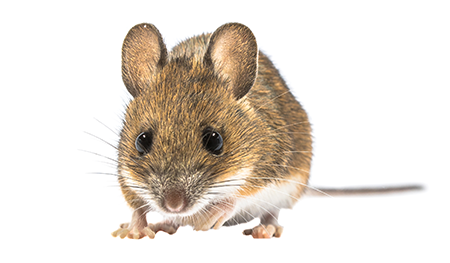Mice

HOUSE MOUSE (Musmusculus)
Description:
The common house mouse is a small, slender rodent with a slightly pointed nose, large ears, and small black eyes. Typically grayish brown with a gray or buff belly they weigh about 1/2 an ounce. An adult mouse is about 5 1/2 to 7 1/2 inches long with a 3 to 4-inch tail. Mice are nocturnal but they can be seen during the day as well.
Biology:
The house mouse arrived in North America from Central Asia on ships with settlers from Europe and other parts of the world. More common and more difficult to control than rats, mice are extremely prolific. A female mouse can produce over 70 mice in just one year! Although house mice usually prefer to eat grains, they will sample and contaminate many different foods.
Mice prefer to live outdoors. However, when the weather gets colder in the fall, mice seek shelter and food inside homes and commercial buildings. They can squeeze through nearly any opening larger than 1/4 inch. Mice are excellent climbers and can run up any rough vertical surface or even travel along wire cables.
Did You Know?
Mice have teeth that never stop growing, similar to horses. Their incisors can grow up to 0.3 mm per day. If left untouched, a mouse’s teeth could grow over 4 inches in just 1 year! That’s nearly 70% of their body length. For comparison, if a human's teeth grew similarly, they would be over 4 feet long!
Impact:
While mice do not cause the same health and economic problems as rats, mice can be a severe problem. They can contaminate and destroy food with their droppings. Mice also often destroy paper goods, woodwork, furniture, upholstery, and clothing. Mice are also vectors for disease and contribute to the spread of Murine Typhus, Rickettsial Pox, Tularemia, Salmonella, and Bubonic Plague.
Effective controls of mice involve sanitation, exclusion, and population reduction. Sanitation and exclusion are the first line of defense against mice infiltrations. Exclusion is the most successful and permanent form of house mouse control. For existing mouse infestations, trapping or baiting is almost always necessary.
Additional Links:
http://www.ipm.ucdavis.edu/PMG/PESTNOTES/pn7483.html
